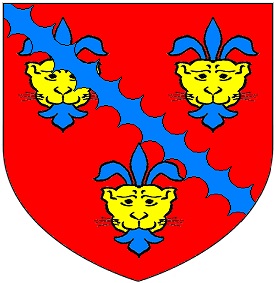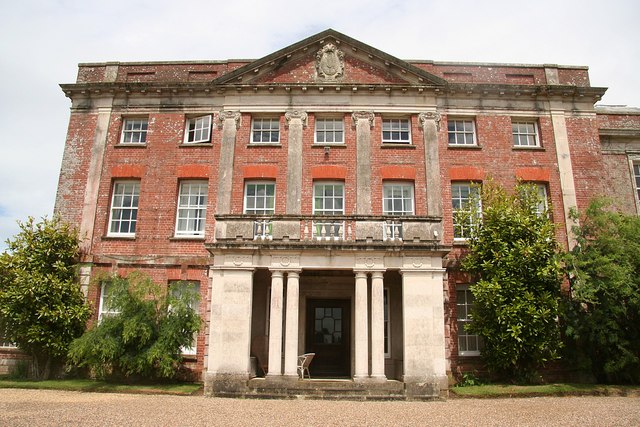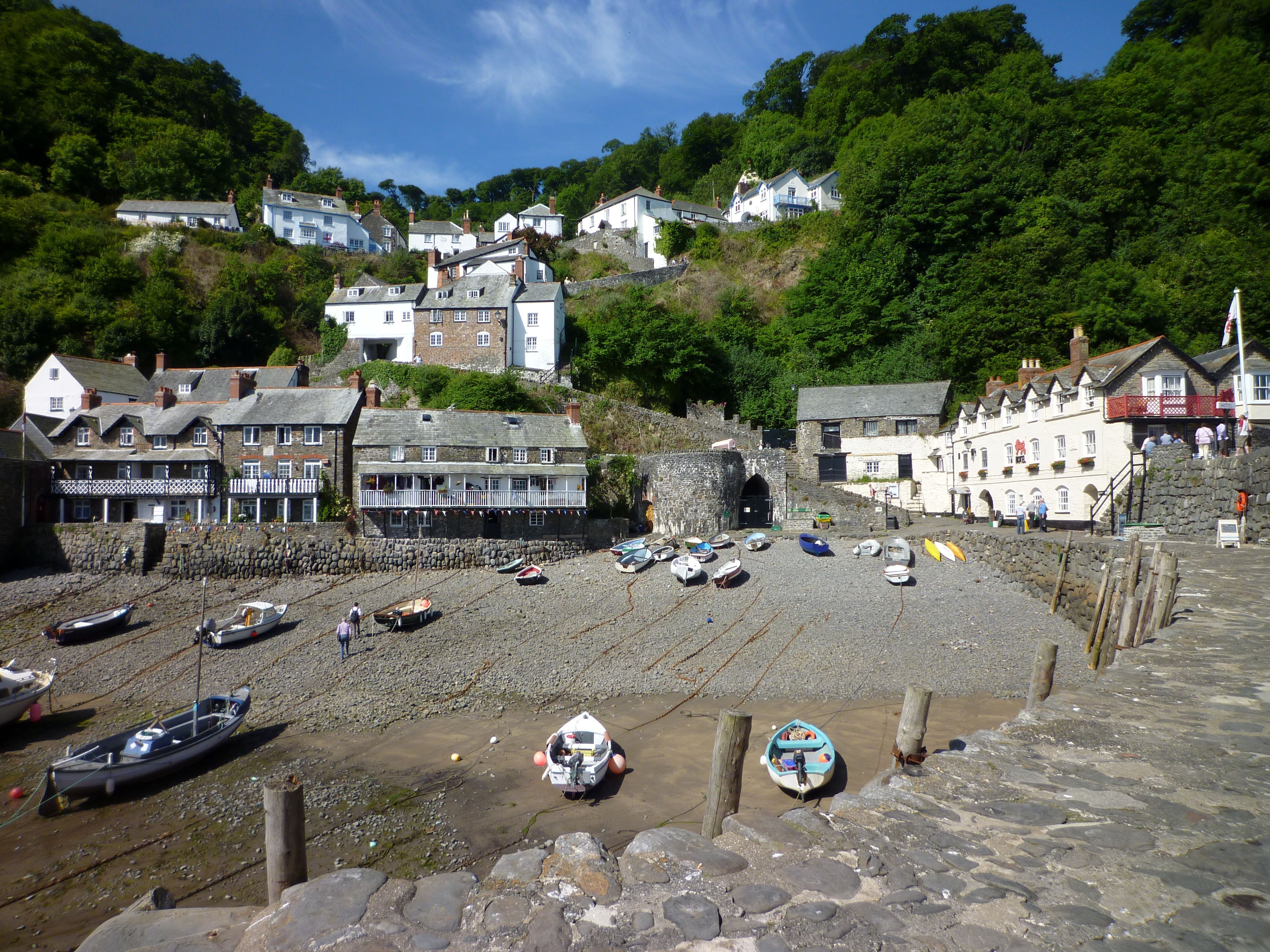|
Yeo Vale, Alwington
Yeo Vale (anciently Yeo) is an historic estate in the parish of Alwington in North Devon, England. The grade II listed mansion house known as ''Yeo Vale House'', situated 1 mile east of Alwington Church and 3 miles south-west of Bideford, incorporating a 15th-century gatehouse, was demolished in 1973, having been abandoned as a residence in 1938 and having fallen into a dilapidated state. it was situated in the valley of the River Yeo, a small river flowing into the River Torridge immediately above Bideford. The barton or farmhouse survives, to which was attached the mansion house, together with various out-buildings and stone walls. A private mediaeval chapel was formerly attached to the mansion house and in the early 18th century was demolished and rebuilt as a folly on a hill about 1/4 mile south of the mansion house. It survives today as a ruin overgrown with trees and ivy. Descent The estate is not mentioned in the Domesday Book of 1086. at Yeo The earliest known holder ... [...More Info...] [...Related Items...] OR: [Wikipedia] [Google] [Baidu] |
Halsbury
Halsbury (pron. "Haulsbury") is a historic manor in the parish of Parkham in North Devon, England. It is situated 2 miles north-east of the village of Parkham and 4 miles south-west of the town of Bideford. Halsbury was long a seat of the ancient Giffard family, a distant descendant of which was the celebrated lawyer Hardinge Stanley Giffard, 1st Earl of Halsbury (1823–1921), who adopted the name Halsbury for his earldom and was the author of the essential legal reference books ''Halsbury's Statutes''. Halsbury Barton, now a farmhouse, retains 16th- and 17th-century elements of the former manor house of the Giffard family. It was described in a record of 1560 as a "new dwelling house". Descent de Halsbury The ''de Halsbury'' family were the earliest-recorded holders of the manor and took their surname from it. The descent of Halsbury in the family of Giffard was as follows:Pole, p.374 *Walter de Halsbery, living during the reign of King Henry II (1154–1189) *Baldwyn de ... [...More Info...] [...Related Items...] OR: [Wikipedia] [Google] [Baidu] |
Denys Family
The surname Denys was borne by at least three prominent mediaeval families seated in Gloucestershire, Somerset and Devon in southwest England between 1166 and 1641. It is not known if any relationship existed between these families. The surname ''Denys'' is just one of many variant spellings of the name: ''Denise'', ''Le Deneis'', ''Le Danies'', ''le Deneys'' ,and most recently ''Dennis'', are some of the others. The family of Denys was apparently of Danish origin, and was recorded in early Norman charters in French as ''le Deneys'', meaning "The Dane", which was frequently Latinised by scribes as Dacus, being the adjectival form of ''Dacia'', the mediaeval Latin for Denmark, thus "Danish". Denys of Gloucestershire An early and influential west-country family named Denys seems to have originated in Gloucestershire in the 13th century and to have moved into Glamorgan, where it was resident at Waterton, before moving back to Gloucestershire c. 1380, where it was seated at Siston ... [...More Info...] [...Related Items...] OR: [Wikipedia] [Google] [Baidu] |
Holcombe Burnell
Holcombe Burnell is a civil parish in Devon, England, the church of which is about 4 miles west of Exeter City centre. There is no village clustered around the church, rather the nearest village within the parish is Longdown. Only the manor house and two cottages are situated next to the church. The former manor house next to the church is today known as Holcombe Burnell Barton having subsequently been used as a farmhouse. The manor was in the historical Hundred of Wonford. Church of St John the Baptist The church was dedicated originally to St Nicholas, mentioned in a charter dated 1150. In the 15th century the manor was acquired by a member of the Denys family of Orleigh in Devon, and the church was then substantially reconstructed. The church was restored in the Victorian era in 1843–1844, to the plans of the Exeter architect John Hayward with Henry Lloyd of Bristol. The north aisle was added at that time. The church contains a rare Easter Sepulchre, situated on the nort ... [...More Info...] [...Related Items...] OR: [Wikipedia] [Google] [Baidu] |
Lord Of The Manor
Lord of the Manor is a title that, in Anglo-Saxon England, referred to the landholder of a rural estate. The lord enjoyed manorial rights (the rights to establish and occupy a residence, known as the manor house and demesne) as well as seignory, the right to grant or draw benefit from the estate. The title continues in modern England and Wales as a legally recognised form of property that can be held independently of its historical rights. It may belong entirely to one person or be a moiety shared with other people. A title similar to such a lordship is known in French as ''Sieur'' or , in German, (Kaleagasi) in Turkish, in Norwegian and Swedish, in Welsh, in Dutch, and or in Italian. Types Historically a lord of the manor could either be a tenant-in-chief if he held a capital manor directly from the Crown, or a mesne lord if he was the vassal of another lord. The origins of the lordship of manors arose in the Anglo-Saxon system of manorialism. Following the N ... [...More Info...] [...Related Items...] OR: [Wikipedia] [Google] [Baidu] |
Tapeley
Tapeley is a historic estate in the parish of Westleigh in North Devon, England. The present mansion house known as Tapeley Park is a grade II* listed country house, built or enlarged from an existing structure in about 1704, remodeled in the 19th century and again in the early 20th century when pilasters, portico, pediment and parapet were added to create a Queen Anne style building. In the mid 19th century the estate was inherited from the Clevland family by William Langham Christie of Glyndebourne in Sussex. His grandson was John Christie (born 1882), the founder of Glyndebourne Opera Festival, who bequeathed Tapeley to his daughter Rosamund Christie (1933–1988), who passed it onto her nephew Hector Christie (born 1963), who briefly turned it into a hippie commune. In 2011, Tapeley Park was the subject of an episode of the Channel 4 television programme ''Country House Rescue'', presented by the hotelier Ruth Watson, who advised on restoring the estate to a sound f ... [...More Info...] [...Related Items...] OR: [Wikipedia] [Google] [Baidu] |
Chittlehampton
Chittlehampton is a village and civil parish in the North Devon district of Devon, England. The parish is surrounded clockwise from the north by the parishes of Swimbridge, Filleigh, South Molton, Satterleigh and Warkleigh, High Bickington, Atherington, and Bishop's Tawton. According to the 2001 census, the parish had a population of 820. There is an electoral ward of the same name. In the 2011 census this ward had a population of 2,255. The parish originally included two exclaves; Chittlehamholt to the south (now a parish in itself), and part of the modern parish of East and West Buckland. It now includes Chittlehampton, Umberleigh, Furze, Stowford and some other outlying hamlets. The village was the site of limestone quarries which supplied many of the county's lime kilns. Parish church Chittlehampton is the home of St. Hieritha's church and holy well. Until the 16th century many people made pilgrimages to Chittlehampton to visit the well. Today, campanologists tra ... [...More Info...] [...Related Items...] OR: [Wikipedia] [Google] [Baidu] |
Brightley, Chittlehampton
Brightley was historically the principal secondary estate within the parish and former manor of Chittlehampton in the county of Devon, England, situated about 2 1/4 miles south-west of the church and on a hillside above the River Taw. From the early 16th century to 1715 it was the seat of the Giffard family, whose mansion house occupied the moated site immediately to the west of the present large farmhouse known as Brightley Barton, a Grade II listed building which incorporates some elements of the earlier house. It is not to be confused with the 12th-century Brightley Priory near Okehampton. History Brightley was the seat of a junior line of the prominent gentry family of Giffard of Halsbury in the parish of Parkham. The present house, named Brightley Barton which has long served as a large farmhouse, retains only one room of the former much larger mansion of the Giffards, but the mediaeval retaining walls of the former moat survive, which is a great rarity in North Devon.Cherry ... [...More Info...] [...Related Items...] OR: [Wikipedia] [Google] [Baidu] |
Clovelly
Clovelly () is a privately-owned harbour village in the Torridge district of Devon, England. The settlement and surrounding land belongs to John Rous who inherited it from his mother in 1983. He belongs to the Hamlyn family who have managed the village since 1738. The village, which is built into the wooded sea cliffs of the north Devon shore, has a steep pedestrianised cobbled main street with traditional architecture. Due to the gradients, donkeys (now mostly replaced with sledges) have been used to move goods and cargo from Clovelly Bay. Visitors to the village entering via the visitor centre are required to pay an entrance fee which covers parking, entrance to two museums, Clovelly Court gardens, and an audiovisual history guide. The village is a tourist destination and is host to an annual Lobster and Crab festival. At the 2011 census, the parish population was 443, a decrease of 50 on the 2001 census. The island of Lundy is part of the electoral ward of Clovelly Bay. Hi ... [...More Info...] [...Related Items...] OR: [Wikipedia] [Google] [Baidu] |
Wear Giffard
Wear is the damaging, gradual removal or deformation of material at Solid, solid surfaces. Causes of wear can be mechanical (e.g., erosion) or Chemistry, chemical (e.g., corrosion). The study of wear and related processes is referred to as tribology. Wear in machine elements, together with other processes such as fatigue (material), fatigue and creep (deformation), creep, causes functional surfaces to degrade, eventually leading to material failure or loss of functionality. Thus, wear has large economic relevance as first outlined in the Tribology#The Jost report, Jost Report. Abrasive wear alone has been estimated to cost 1-4% of the gross national product of industrialized nations. Wear of metals occurs by plastic displacement of surface and near-surface material and by detachment of particles that form wear debris. The particle size may vary from millimeters to Nanometre, nanometers. This process may occur by contact with other metals, nonmetallic solids, flowing liquids, so ... [...More Info...] [...Related Items...] OR: [Wikipedia] [Google] [Baidu] |
John Prince (biographer)
Rev. John Prince (1643–1723), vicar of Totnes and Berry Pomeroy in Devon, England, was a biographer. He is best known for his ''Worthies of Devon'', a series of biographies of Devon-born notables covering the period before the Norman Conquest to his own era. He became the subject of a sexual scandal, the court records of which were made into a book in 2001 and a play in 2005. Origins John Prince was born in 1643 in a farmhouse (now called Prince's Abbey) on the site of Newenham Abbey, in the parish of Axminster, Devon. He was the eldest son of Bernard Prince (died 1689) (to whom John erected a monument in Axminster Church) by his first wife Mary Crocker, daughter of John Crocker,Courtney, William Prideaux. " Prince, John (1643–1723)", ''Dictionary of National Biography'', London, 1885–1900, Volume 46. of the ancient Crocker family seated at Lyneham House in the parish of Yealmpton, Devon. Lyneham was, after ''Hele'' the second earliest known home of the Crocker family, one ... [...More Info...] [...Related Items...] OR: [Wikipedia] [Google] [Baidu] |
Longueville, Calvados
Longueville () is a commune in the Calvados department in the Normandy region in northwestern France. Population See also *Communes of the Calvados department The following is a list of the 528 communes of the Calvados department of France. The communes cooperate in the following intercommunalities (as of 2020):Communes of Calvados (department) Calvados communes articles needing translation from French Wikipedia {{Calvados-geo-stub ... [...More Info...] [...Related Items...] OR: [Wikipedia] [Google] [Baidu] |




